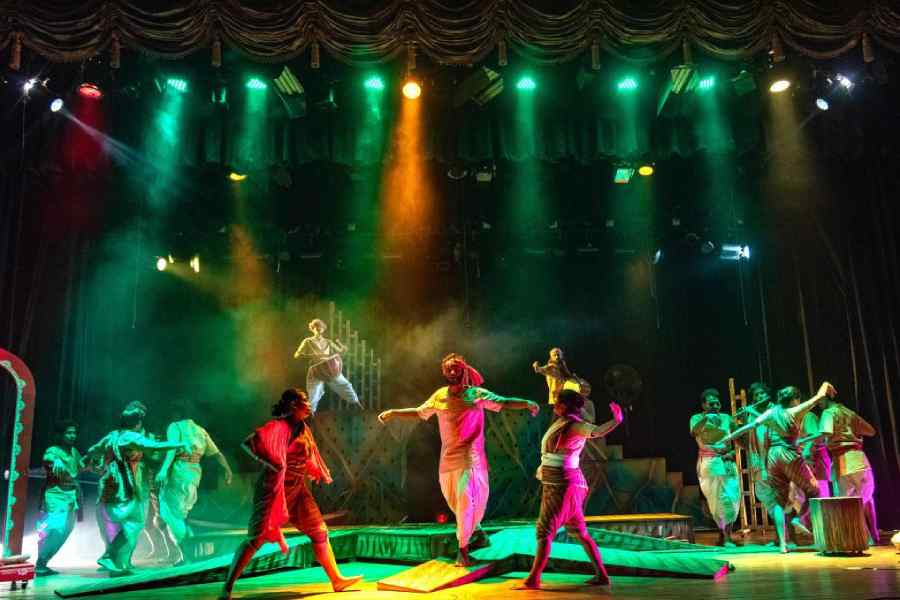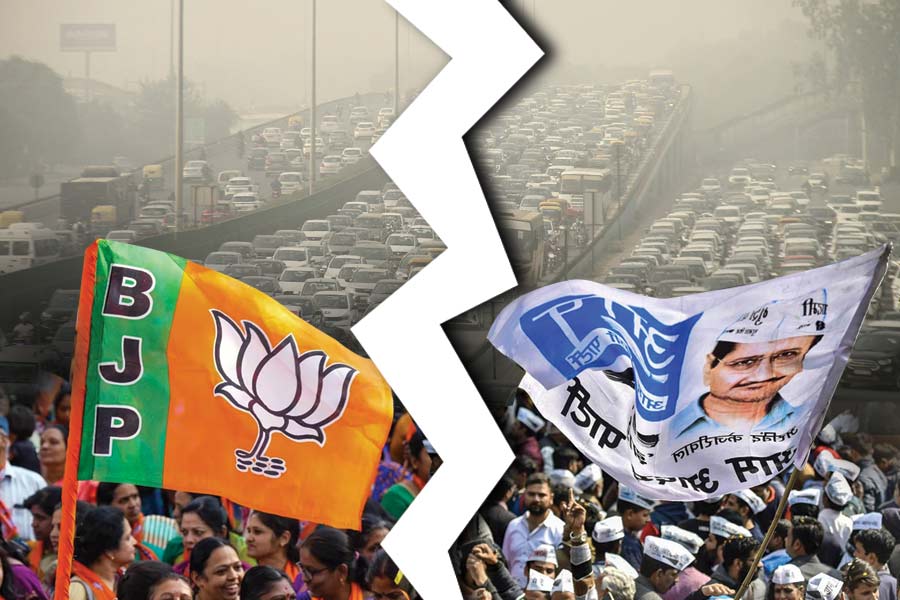The chief takeaway from Badabon (produced by Dakshin Dumdum Sanskriti Kendra, written by Sudip Sinha and directed by Prithwis Rana) is that the play will go down in the archives of the cultural history of Bengal as the first thorough and extensive theatrical intervention into the Marichjhapi massacre (1979). Sinha’s balanced take on the issue finds compelling dramatic interpretation as Rana allows conflicting opinions to clash on stage, creating moments of historiography as performance. In a fine display of virtuosic story-telling, various narrative threads (Jamuna/Mantu, Bonbibi, ecotourism, man-tiger conflict) are manipulated to build up towards the Marichjhapi segment, positing it firmly at the thematic core of the text.
As the director, Rana impresses with his brand of ‘total theatre’, spreading the performance along the width, depth and height of the stage, having his actors stretch themselves to their utmost — physically and vocally — and deploying a lavish scheme of sound and light. The heady concoction produces captivating theatre, keeping the audience glued to the action that lasts over two hours. Regarding time span, Rana can consider tightening the performance by deleting the Chau/Bonbibi pala face-off and the character of the doctor (and the sub-plot of her romance with the documentary filmmaker), as these are extraneous to the plot, causing the narrative flow to stumble and falter.
Working with a band of trainee repertoire actors, Rana succeeds in extracting from them performances of a high standard, pointing to strenuous hours spent in rehearsals. As is usual in theatre, some actors stand out for their individual proficiency — Panna Mondal, Anirban Sarkar, Nilanjan Ganguly and Raj Rakhal belong to this category. Abhra Dasgupta’s light design brilliantly recreates the refracted shimmering of rippling water and the mosaic of light and shade of the jungle. His mastery of underscoring dramatic tension through the use of many-hued light, projected from inventive angles at varied intensities, strengthens the performance. Bratya Basu, credited as the mentor, can take rightful pride in this production.











